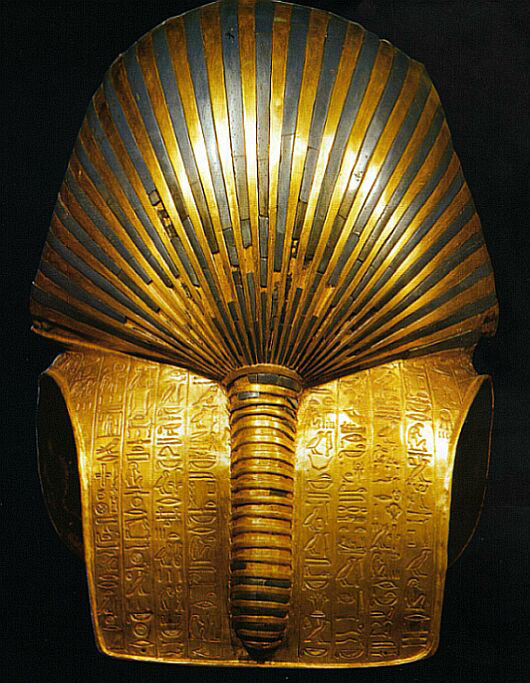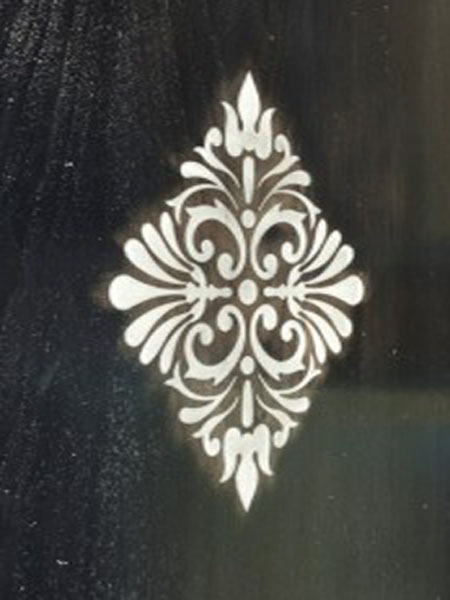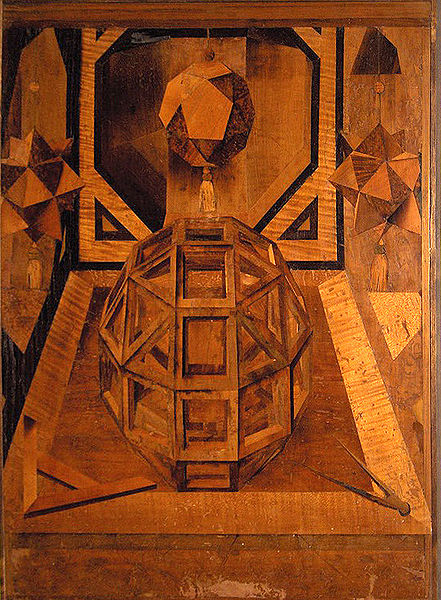
![[www.oranilegno.com]](http://www.oranilegno.com/grafica/oranilegno.png)

Historical origins of marquetryThe term marquetry (Tarsia) comes from ’Tarsi’ which means to connect. The original technique consisted in placing side pieces of different material, cut to fit perfectly on each other and get on the whole, decorative geometric or naturalistic. The inlay is applied to decorating objects, furniture or architecture, fall under the broader category of the decorations obtained by union of different materials. The first inlay works are probably attributable to the first Egyptian dynasty, who lived around 3000 BC. They could create works of well-made inlay materials of various kinds and colors such as glass, ivory, obsidian, quartz, wood. It ’just as likely that the inlay is in the Far East already appeared in earlier times, growing in a completely self-realization that both techniques for materials. The Egyptians constantly refine their techniques for centuries, until they got a skill to create works such as the one we see below, depicting the life-size mask of King Tutankhamon (1341 BC - 1323 BC), made with the inlay of blue glass, obsidian and quartz. 

Example of inlaying of ancient Egypt depicting the mask of King Tutankhamon. History of inlay in SardiniaAt the moment there are few historical accounts attesting to the development of the inlay technique in Sardinia, as also happens for many events and aspects relating to the history of this island. Thus we make two assumptions which, as we shall see, not mutually exclusive: In the first case we can assume that the master carpenters on the island have developed the skills necessary to the creation of inlaid work autonomously and pioneering. This assertion is plausible, especially for the hinterland communities, where the military and cultural influences of civilization hard won to creep in archaic customs and traditions. In the second hypothesis we consider the fact that the conquering civilization have had strong influences on the culture of port cities: as Cagliari (Kalaris), Porto Torres (Turris Libisonis) and Olbia, and also for the areas immediately behind the coast. Therefore it is reasonable to think that the art of Tarsia was transmitted by master carpenters arrived on the island with the invaders. As we said the two hypotheses are not mutually exclusive and indeed help to create a very likely general framework. The Romans, settled in Sardinia in 238 BC, although they found it extremely difficult to live with the Sardinians, over time will integrate with the native peoples of the island and were able to create structures and facilities of considerable importance as the amphitheater and roads, which facilitated the economic and cultural exchanges, especially between north and south of the island. In 534 AD the Byzantines arrived, finding a less harsh situation and more open-minded to outside influences. This allowed the rapid spread of the Christian religion and of a set of traditions such as holidays and customs, of which there are still traces. It was during this period that could be arrived the masters of marquetry , perhaps accompanying the emperor Constantine, who was able to easily enter into the good graces of the Sardinian people. In conclusion it is reasonable to think that the art of Tarsia has spread and evolved in Sardinia thanks to the ingenuity of local craftsmen and also for indoctrination at the hands of foreign masters marquetry. 

Esempio di Tarsia Certosina (a sinistra) e intarsio geometrico e prospettico ( a destra). History of inlay in Italy - The TarsiaThe inlay technique is rapidly spread across the whole of Asia Minor, and arrived in Italy around 300 AD by the name of Tarsia or Intarsia . At that time the Roman Empire expanded to the east and the Emperor Constantine moved the capital from Rome to Byzantium, which was first renamed the "New Rome" and then "Constantinople ." The new capital of the empire was certainly a prolific dock of Italian trainees tath learned the secrets of this technique and applied it especially to wood, in what is more properly called Tarsia Lignea (Wood Inlay). Perhaps the lack of concrete evidence, the history of marquetry in Italy has a gap of nearly a millennium. In fact, the most significant manifestations of this art have only in the late Middle Ages, starting in 1300, by the marquetry masters of Siena, so capable that for over one hundred years, they had the commission to the works of major importance. Likewise the Venetian craftsmen acquired greater mastery also due to flourishing trade and relations with the countries of the East. Among the many workshops of northern Italy acquired considerable prestige that of Canozi from Lendinara, called "Lendinara", which some attribute the origins of the technique Tarsia Certosina (Carthusian inlay). Very important was the contribution made in the early decades of the 1400s by the Florentine masters of marquetry, which changed the decorative repertoire, passing from the usual themes of Eastern character, to the representation of geometric solids with the use of Tarsia Geometrica, and perspective views in what is called Tarsia Prospettica. At the end of 1400 the trends of the orderers, and then those of inlayer masters, are looking increasingly tight juxtaposition to the pictorial, with the search for effective ways to represent the various shades of color and contrasts of light and shade. Unfortunately, this comparison has marked the decline of the art of marquetry, which had to give way to greater versatility of painting.. Not for this reason, inlaid woodwork has lost its raison d’etre, carving out a leading role in furnishing. There were several workshops of carpenters who applied this technique in furniture construction, tables, chairs, chests and other accessories made to art, so as to influence the tastes and demands of customers more refined. The inlay in the town of Orani
We come now to the present day to give the right contribution to the carpenters of the village of
Orani. Of all the crafts of the town of Orani, those who have an ancient and praiseworthy history, are those related to the manufacture of iron and wood. It is in this latter area that places the Carpenter & Ziranu Balvis who has inherited the skills and knowledge of past generations and which operates in the territory for over fifty years, having consolidated his position: first through the dedication of its founder Giovanni Ziranu (Ziu Juvanne); then by the passion and the constant work of improvement of his pupil Francesco Balvis. Let us not dwell in non cautious praises, and we see some work done by our carpentry that, more than many speeches, demonstrate our skill.
|
 |